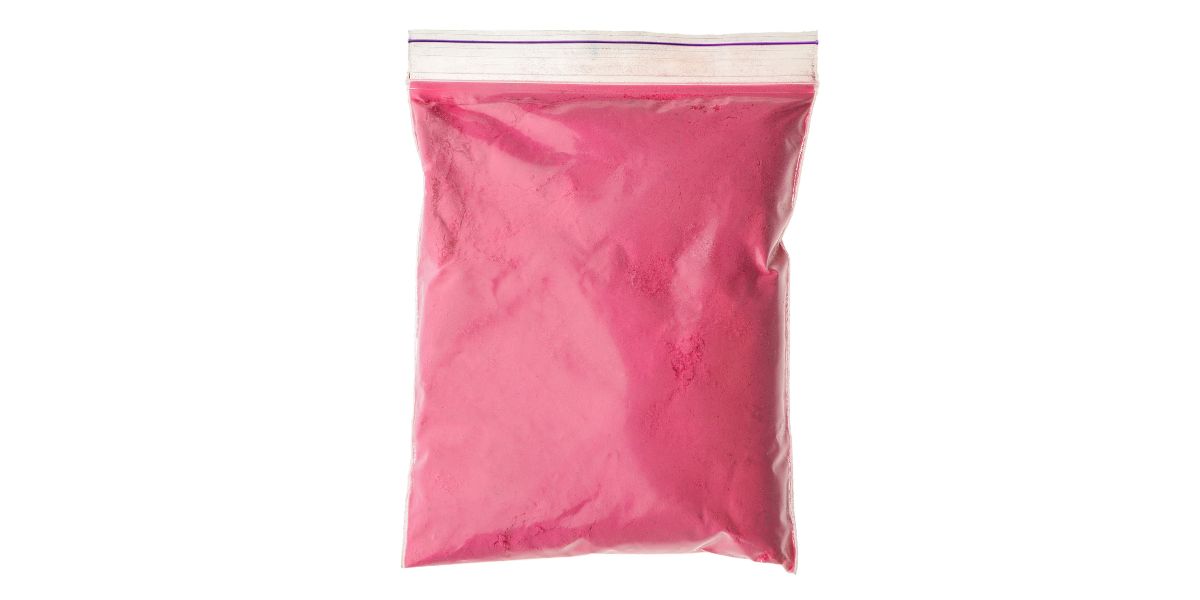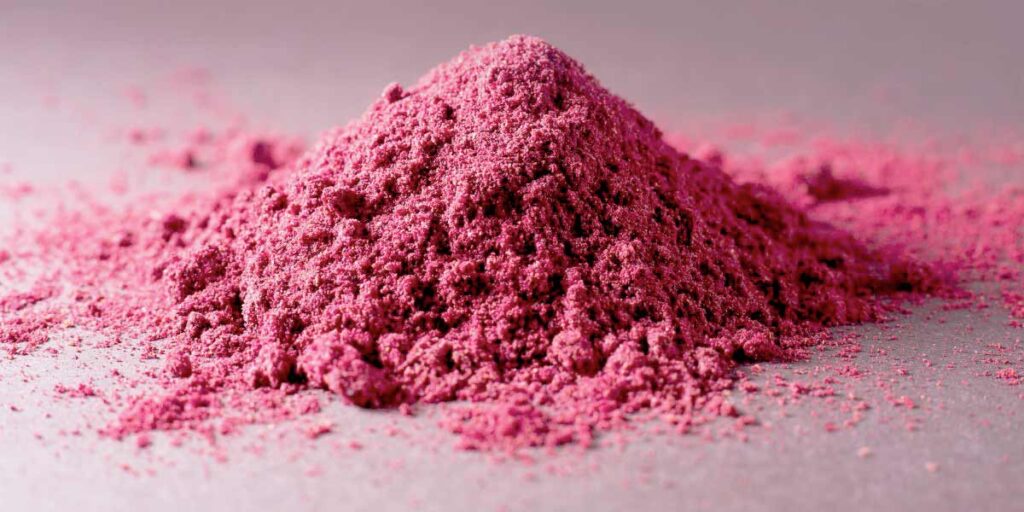What is Pink Cocaine (Tusi)?


Pink cocaine, also known as tusi or tuci, is an emerging synthetic drug that is becoming popular in various countries, including the United States. Its popularity has surged in the club scene and among recreational drug users because of its colorful appearance and stimulant effects. It’s a new psychoactive substance, and this bright pink powder hides dangerous ingredients that pose serious health risks.
Pink cocaine’s bright color and association with party culture have contributed to its appeal, particularly among younger demographics seeking an enhanced nightlife experience. However, the drug’s unpredictable effects have already drawn the attention of law enforcement agencies worldwide. The Drug Enforcement Administration (DEA) has issued multiple warnings about the rapid spread of tusi in the US, especially in urban areas such as New York City.
The real danger comes from its unknown ingredients. These can vary a lot and may include ketamine, MDMA, methamphetamine, opioids, caffeine, and even deadly additives.
What Is Tusi (Pink Cocaine)?
Tusi, commonly called pink cocaine because of its color, is not related to cocaine. Instead, it is a synthetic drug mixture that often contains substances like ketamine and MDMA, making it a potent combination of both depressants and stimulants. This new psychoactive substance (NPS) is gaining attention, particularly in Latin America, where it first emerged in underground party scenes. Tusi or tuci is derived from the slang term used to describe this dangerous concoction.
Common Ingredients in Tusi
The composition of tusi can vary significantly depending on the manufacturer or dealer. Below are some of the most common ingredients that have been found in lab tests and reports:
- Ketamine
- MDMA
- Methamphetamine
- Caffeine
- Opioids
- Food coloring
- Synthetic substances
- Unknown chemicals
- Stimulants and depressants

What Are the Health Risks of Pink Cocaine?
The health risks associated with pink cocaine are severe and complex. One of the primary dangers lies in the unpredictability of the drug’s composition.
Since tusi is a synthetic drug, no two batches are alike. Lab tests have shown that it can contain a variety of substances, from ketamine to unknown chemicals. This unpredictability significantly increases the risk of overdose.
Some of the most immediate health risks include extreme agitation, hallucinations, and a heightened heart rate, which can lead to cardiac issues. The mixture of uppers and downers— stimulants and depressants— creates a dangerous chemical cocktail that confuses the body’s normal functions. The DEA and health experts warn that this combination, which is often found in pink cocaine, poses a serious risk of overdose, especially when used in high doses.
Short-Term Health Risks
In the short term, users of tusi can experience a range of immediate health effects, many of which are unpredictable because of the variability of the drug’s ingredients. These risks can affect both the body and the mind, including:
- Increased heart rate
- Nausea and vomiting
- Hallucinations
- Agitation
- Confusion
- Anxiety
- Paranoia
- Elevated blood pressure
Effects of Pink Cocaine
The effects of pink cocaine can vary widely depending on its composition. Commonly, users report experiencing intense euphoria and heightened energy levels. These stimulant effects make tusi popular in the club scene, where people seek heightened sensory experiences while partying. Alongside this euphoria, users also report feelings of dissociation, likely because of the presence of ketamine in the mixture.
However, the effects, including hallucinations, confusion, and aggression, are not uncommon. These side effects mirror those seen in other recreational drugs, making tusi not just unpredictable but also dangerous. The stimulant properties can cause people to engage in risky behavior while under the influence, including unsafe driving or violent outbursts.
Users of tusi often chase the euphoric high, increasing their risk of addiction. The stimulant effect of the drug gives users a short-lived boost in mood and energy, but this is often followed by a “crash” as the drug wears off, leading to severe depression or fatigue. These cycles of highs and lows contribute to the likelihood of repeated use, spiraling into addiction.
The following are some of the most frequently reported effects associated with pink cocaine use. These effects can differ greatly depending on the composition and dose of the drug:
- Euphoria
- Increased energy
- Hallucinations
- Dissociation
- Risky behaviors
- Mood swings
Long-Term Effects of Pink Cocaine
The long-term effects of pink cocaine are equally alarming. Prolonged use can lead to significant mental and physical health deterioration. Chronic users may experience cognitive impairment, memory loss, and personality changes, all of which are compounded by the damage caused to the brain by substances like MDMA and ketamine.
Physical health can also decline with extended use. Prolonged abuse of tusi can lead to heart issues, respiratory problems, and damage to vital organs such as the liver and kidneys. As pink cocaine is often used in the street drug market, the contamination with other harmful substances adds another layer of danger for long-term users.
Moreover, repeated use increases tolerance, pushing people to consume more of the drug to achieve the same effects. This often leads to higher risk behaviors, including mixing tusi with other dangerous drugs, amplifying the risk of overdose or fatal drug interactions.
With repeated use, tusi can cause significant long-term health damage. The following are some of the most concerning long-term effects that have been reported:
- Cognitive impairment
- Memory loss
- Heart problems
- Kidney damage
- Liver damage
- Respiratory issues
- Personality changes

Pink Cocaine Addiction Treatment
Caring for and treating pink cocaine addiction requires specialized, patient-focused care because of the complexities involved with its synthetic composition. White Oak Recovery Center (WORC) offers intensive, evidence-based treatment programs that focus on both the physical and mental aspects of your addiction.
WORC provides medical detox, medication-assisted treatment, and a dual diagnosis program to help treat co-occurring mental health disorders.
If you or someone you know is battling addiction, White Oak Recovery Center’s inpatient treatment center is here to provide the support and care necessary for meaningful, life-long recovery.
Contact WORC. Our compassionate treatment specialists are eager to hear your story and get you the help you deserve.

Am I covered for addiction treatment?
Your insurance may cover treatment. Call now for an entirely free and confidential assessment. Recovery starts with a phone call.

- Palamar, Joseph J., “Tusi: A New Ketamine Concoction Complicating the Drug Landscape.” Am J Alcohol Abuse, Sep. 2023.
- “US: ‘Pink Cocaine’ Emerging as New Threat in Drug Market, Experts Warn.” National Association of Drug Diversion Investigators (NADDI), Jul. 2024.
- “What Is Pink Cocaine?” Poison Control: National Capital Poison Center, 2024.
- “New Jersey Man Arrested in Sales of Eight Guns, Cocaine and ‘Pink Cocaine’ in Manhattan.” The United States Drug Enforcement Administration, Sep. 2024.
- Gonzalez, Deborah, et al., “Acute Effects of the Novel Psychoactive Drug 2C-B on Emotions.” Biochemistry Research International, Oct. 2015.
Medical Disclaimer:







